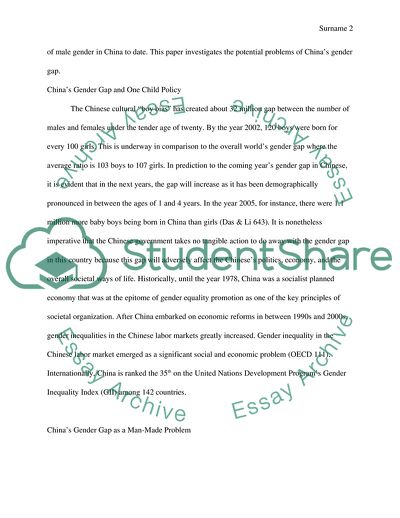Cite this document
(Potential Problems of Chinas Gender Gap Case Study Example | Topics and Well Written Essays - 1250 words, n.d.)
Potential Problems of Chinas Gender Gap Case Study Example | Topics and Well Written Essays - 1250 words. https://studentshare.org/sociology/1880380-potential-problems-of-chinas-gender-gap
Potential Problems of Chinas Gender Gap Case Study Example | Topics and Well Written Essays - 1250 words. https://studentshare.org/sociology/1880380-potential-problems-of-chinas-gender-gap
(Potential Problems of Chinas Gender Gap Case Study Example | Topics and Well Written Essays - 1250 Words)
Potential Problems of Chinas Gender Gap Case Study Example | Topics and Well Written Essays - 1250 Words. https://studentshare.org/sociology/1880380-potential-problems-of-chinas-gender-gap.
Potential Problems of Chinas Gender Gap Case Study Example | Topics and Well Written Essays - 1250 Words. https://studentshare.org/sociology/1880380-potential-problems-of-chinas-gender-gap.
“Potential Problems of Chinas Gender Gap Case Study Example | Topics and Well Written Essays - 1250 Words”. https://studentshare.org/sociology/1880380-potential-problems-of-chinas-gender-gap.


